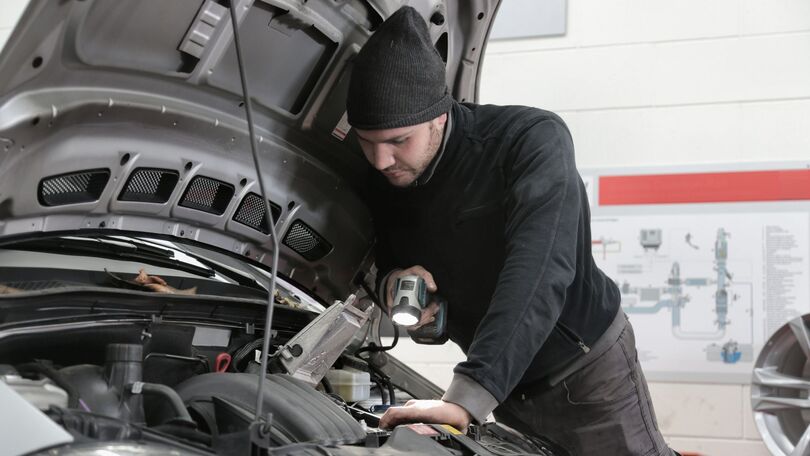To ensure a safe, comfortable and smooth driving experience, there are many components in a car that are responsible. One such crucial component is the car suspension system. Do you know what is car suspension system and how do car suspensions work?? The suspension system absorbs vibrations and shocks caused by uneven road surfaces, potholes, and bumps, which would otherwise transfer to the passengers and damage the vehicle.
Understanding how car suspensions work is crucial for every driver as it helps identify and address potential problems early on. By understanding how the car suspension works, drivers can determine when it needs maintenance or repairs and when to replace worn-out components.
So, without further ado, let’s overview car suspension systems, common suspension problems, and essential maintenance tips.
What is a Vehicle Suspension System?

A vehicle suspension system connects a car’s wheels to its body. It gives support and cushioning against the forces of road surfaces. In addition, it ensures that the tires remain in contact with the road surface, so that you can enjoy a stable and comfortable ride every time.
You cannot just ignore the necessity of the suspension system in a car. Needless to say, it plays a critical role in providing a safe and comfortable driving experience. The suspension system absorbs shocks and vibrations caused by uneven road surfaces, potholes, and bumps, protecting the vehicle and its passengers from damage and discomfort.
The most important components of a suspension system include shock absorbers, struts, springs, control arms, and sway bars. With the help of these components, the suspension system provides a stable and comfortable ride while ensuring that the vehicle remains in control and safe to drive.
How Does Car Suspension Work?
A car suspension system connects the vehicle’s wheels to its body using a combination of springs, shock absorbers, and other components. When the wheels hit a bump or uneven surface, the suspension system compresses the springs, absorbing the impact and preventing the energy from transferring directly to the car’s body. The shock absorbers then help dampen any remaining vibrations, providing a smoother ride for passengers. The suspension system also helps maintain proper wheel alignment, ensuring the tires remain in contact with the road surface for maximum traction and handling.
In a nutshell, the suspension system is a critical component in a car, providing stability, control, and comfort for the driver and passengers.
Common Suspension Problems & How to Fix Them
Car suspension problems can make driving uncomfortable and unsafe, but knowing what to look for can help you address them quickly. Here are some common car suspension problems drivers may encounter and how to fix them.
- Uneven tire wear: This is often caused by a misaligned suspension system and can be fixed by having the wheels realigned.
- Vehicle pulling to one side: This can be caused by various issues, such as uneven tire pressure or a misaligned suspension system. A mechanic can diagnose the cause and repair it as necessary.
- Excessive bouncing or vibration: This can be caused by worn-out shock absorbers and fixed by replacing them.
- Vehicle sagging: This can be caused by worn-out springs, which can be replaced to restore the proper ride height.
- Clunking or rattling noises: These can be caused by loose or worn-out suspension components and may require replacement or tightening.
- Steering wheel vibration: This can be caused by various reasons, including worn-out tie rod ends or ball joints, and can be diagnosed and repaired by a mechanic.
To fix these car suspension problems, take the vehicle to a qualified mechanic. An expert can diagnose the issue and recommend the necessary repairs, including replacing worn-out components, adjusting the alignment, or balancing the tires. Regular maintenance, such as having the suspension system inspected and serviced, can also help prevent these problems from occurring in the first place.
Car Suspension Maintenance Tips
You should maintain your car suspension system regularly to ensure its overall performance, safety, and longevity.
Here are some crucial tips on how to maintain your car’s suspension system:
- Look over the signs of wear and tear: Regularly inspect the suspension system for any signs of wear and tear, such as uneven tire wear, fluid leaks, or unusual noises. If you find out any of these issues, having a professional mechanic inspect the system is best.
- Keep the suspension system clean: Dirt and debris can accumulate on the suspension system, causing rust and corrosion. You can clean the system with soap and water regularly for removing debris and keeping it in good condition.
- Check the tire pressure: Check it regularly and ensure it meets the manufacturer’s recommended specifications.
- Replace worn-out components: Suspension components such as shocks, struts, and springs can wear out over time. Replace these components when they show wear and tear to prevent further damage to the suspension system.
- Align the wheels: Regularly align the wheels to ensure proper alignment and prevent premature wear of the suspension components.
Following the above-discussed tips will help you maintain your car’s suspension system, enjoy a smooth and comfortable ride, improve handling and stability, and prevent expensive repairs down the line.
Final thoughts,
The car suspension system ensures a safe and comfortable driving experience. Understanding how the suspension system works and common problems that can occur is essential for every driver. Regular suspension system maintenance is necessary to ensure proper functioning and longevity. In cases where the problem is beyond the driver’s expertise, seek professional assistance. Overall, taking care of the suspension system can help extend the car’s life and prevent costly repairs down the line.
FAQs:
Q: What are the signs that my car suspension system needs repair or replacement?
Ans: Some signs that your car suspension system needs repair or replacement include uneven tire wear, bouncing, excessive noise, and difficulty in steering or handling.
Q: What is the average lifespan of a car’s suspension system?
Ans: Some signs that your car suspension system needs repair or replacement include uneven tire wear, bouncing, excessive noise, and difficulty in steering or handling.
Q: Can I drive with a bad suspension system?
Ans: It is not recommended to drive with a bad suspension system as it can affect the car’s handling, stability, and safety. It can also cause further damage to other parts of the vehicle.
